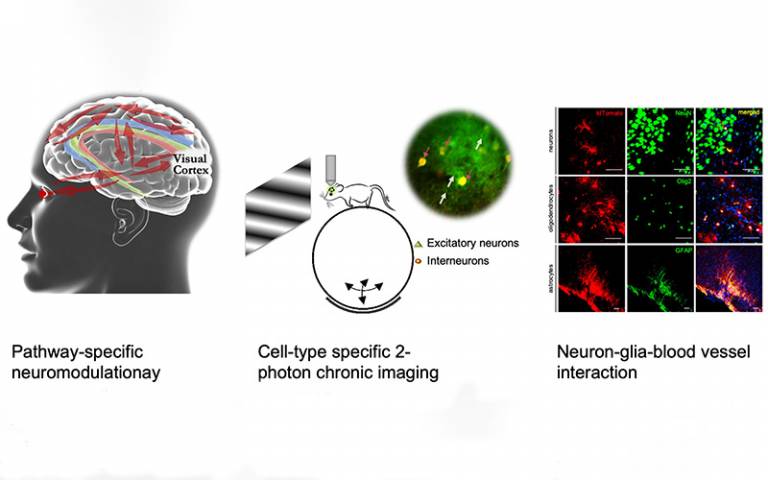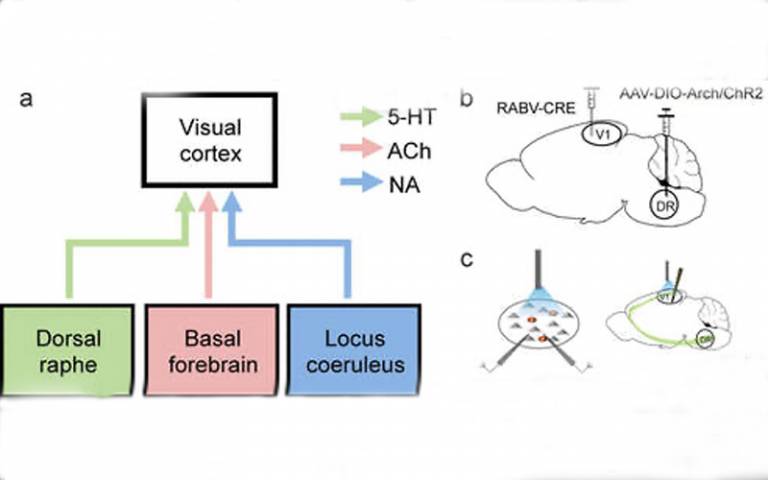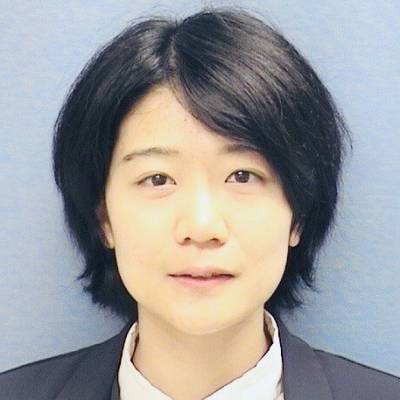Visual Plasticity Lab
The Visual Plasticity Lab is opening in June 2021 at the IoO. If you are interested in joining our team, check the positions we have available.
Dr Sun joined the UCL Institute of Ophthalmology as a Lecturer in July 2020. The Sun lab applies in vivo systems approaches to elucidate how neuromodulation regulates information processing and neuroplasticity in the visual cortex. The Sun Lab studies how neuroplasticity in the visual systems is regulated through interaction in the local environment as well as crosstalk between different brain regions.

- Research
How does the brain maintain a balance between flexibility and stability?Our brain is a dynamic circuit capable of making continuous adaptations to external cues throughout life. After initial assembly and development, an adult brain becomes relatively stable to generate accountable and precise responses yet still maintains a certain level of plasticity for learning & adaptation. To understand how neuroplasticity is regulated in the mouse visual cortex, a sensory system featuring both precision and learning capability, our lab applies in vivo imaging approaches, together with computational, physiological, and molecular manipulation, to identify the underlying circuit and cellular basis of visual cortical plasticity.
Current Projects
Neuromodulatory projections regulating visual plasticity
Growing evidence indicates that the brain works as a whole, relying on interaction of various factors in the local circuit as well as cross-talk between different brain regions. For example, visual cortical neurons in awake behaving animals not only respond to visual stimuli but also are modulated by animal’s behavioral states through neuromodulatory pathways. However, it remains unclear how visual cortex integrates sensory and non-sensory modulatory information from specific subcortical structures to regulate plasticity. To answer this question, we apply close-loop visual training, together with imaging, electrophysiology, and optogenetics, to dissect the contribution of individual neuromodulatory pathway in this process.
Local cellular interaction involved in neuroplasticity
Although circuit plasticity is manifested in the activities of excitatory neurons, other local factors like interneurons and glial cells have been gradually recognized as critical players in modulating circuit changes. It remains unclear how they change and influence excitatory neurons to achieve plasticity, due to technical challenges like sparsity, lack of spiking activity, and diverse subtype responses.
Our lab will address this question by taking advantage of genetic labelling, chronic 2-photon imaging, and dual-cell recordings to track the activity patterns of excitatory neurons and genetically labelled interneurons during visual plasticity to identify how specific subtypes of interneurons change their synaptic connectivity and alter the circuit. We will also employ inducible transgenic lines and pharmacological manipulation to examine other factors like glial cells and pericytes in the bloodvessel.

- People
Principal Investigator
Dr Sun completed her undergraduate thesis at Peking University in 2007 studying visual circuit assembly using computational modelling. In 2013, she obtained her PhD degree in Physiology and Biophysics from the University of Southern California with Drs Li Zhang and Whit Tao, studying circuit computation and sensory development in auditory and visual cortices using both computational and systems approaches. She subsequently did her postdoc training at the University of California San Francisco with Drs Roger Nicoll and Michael Stryker, using electrophysiology and two-photon imaging to study neuroplasticity in brain slice and awake-behaving mice.
Andreea Alexandra
Master Student
Andreea.aldea.18@ucl.ac.uk
 Close
Close

